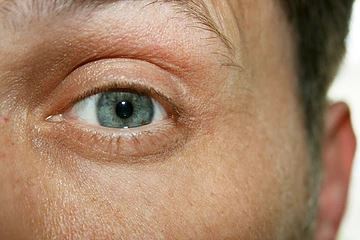Tips for Visual Neglect After a Stroke
Unfortunately, the only time that most people have heard the term visual neglect is if they or a loved one have experienced this awful occurrence. (Or if you are a medical professional!) So if you are here looking for tips for visual neglect after a stroke then you are in the right place. As therapists, we have seen this countless times. The problem though is the lack of resources to combat visual neglect. If you are a loved one or a caregiver/provider of an individual with visual neglect after a stroke then don’t forget to stop by our shop for printable resources.
What is visual neglect?
Neglect is inattention of either the right or left visual field. Although it is possible to have right visual neglect, it is far more common to have left visual neglect. Imagine looking down at a piece of paper to begin writing only to have been told that you started in the middle of the paper. Although the vision impairments may not change, strategies can be learned to better improve visual neglect as well as reduce risks associated with visual neglect.
Who gets visual neglect?
Visual neglect can occur from any specific insult or injury to the brain that affects the vision. This could be a stroke, a head injury, an aneurysm or anything affecting the brain in that specific region.
What to do?
If your loved one is experiencing left neglect they could benefit from therapy services such as occupational therapy or speech therapy. Reach out to your insurance company to determine what assistance they can offer. If you are in an area where access is difficult or have limited insurance coverage some of these tips may help.
Tips to improve Visual Neglect After a Stroke
1. Sit on their “bad” side when interacting
Although it may feel rude, you need to assist with forcing their brain to recognize the side that it doesn’t want to acknowledge. This needs to be done as often as possible. An individual who has neglect to one side of their body will have difficulty eating, dressing… well everything really. Encouraging them to “look to the left” or “look over there” in order to interact is an activity that will encourage and retrain the brain to recognize the neglected side.
2. Placing food on the “good” side
Although it seems backwards to talk on the bad side but eat on the good side, food is IMPORTANT. There is no reason that someone should miss out on half of their meal just because it happened to be placed on the “bad” side. Nutrition is important in the healing process. Placing the plate to the individuals good side will allow for them to see the entire plate. Another strategy is to place food in different bowls and show them what is in each one. They will know that everything is separate and look for the other bowl with the meat or the vegetable for example.
3. Reminding them to “scan” to the bad side
Due to their inability to “scan”, your loved one is at a much higher risk for falling. This is because they are not processing the information perceived as a risk. This lack of scanning can result in tripping over objects on floor, missing a step or even running into the wall (that one hurts!). The scanning strategy can help prevent falls as long as they are using the strategy consistently. Often times this will not just automatically happen and takes numerous attempts at practicing to look to the left in order to create the awareness and pattern required to maintain their safety.
There are many ways to remind someone to look to the left but most often it involves cueing or reminding your loved one, often. You can even use printable activities, this can help you plan time to work on visual cueing each day. If you are looking for easy printable activities to promote scanning you can check out our resources here.
As therapists, we have found that the more consistently you work on visual neglect the more progress you will make. Having many printables is an easy way to continue to challenge the brain. Our printables are straight forward and do not require much ink so that they may be used frequently. The goal, to following the simple directions and scan to identify all of the items asked.
The longer visual neglect is left unnoticed the more difficult it is to resolve; if it can be resolved at all. So the sooner you address things, the better! Even if visual neglect has already occurred, these tips can be utilized as compensatory strategies for dealing with visual neglect. Early intervention with skilled therapy services remains the only intervention to treat visual neglect so always push for skilled services if you are noticing neglect.
The information you need…Straight Up!



